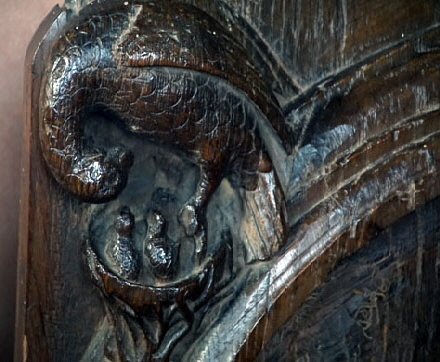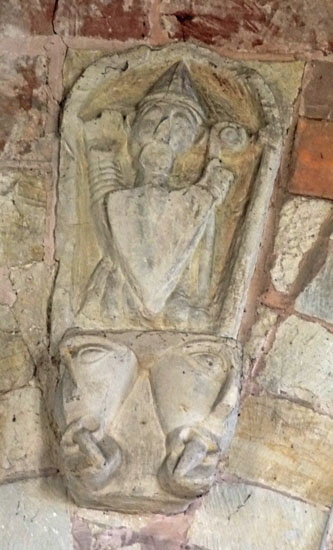|
|
||||||||||||||||||||||||||||||||||||||||||||||||||||||||||
|
Please sign my Guestbook and leave feedback |
||||||||||||||||||||||||||||||||||||||||||||||||||||||||||
|
Recent Additions Great Kimble (Buckinghamshire) Stamford Church Trail (Various) Kingston on Soar (Nottinghamshire
|
||||||||||||||||||||||||||||||||||||||||||||||||||||||||||
|
Misericords were a feature of either monastic or collegiate churches so when you see them in a parish church like Enville that was not either of those things then you know that they will have come from elsewhere after the Dissolution of the Monasteries. The Enville Church Guide suggests Buildwas Abbey - about twenty miles distant - as a likely donor but doesn’t say why. I am indebted to to the Church Guide (a splendidly produced one) for their descriptions that I will paraphrase. |
||
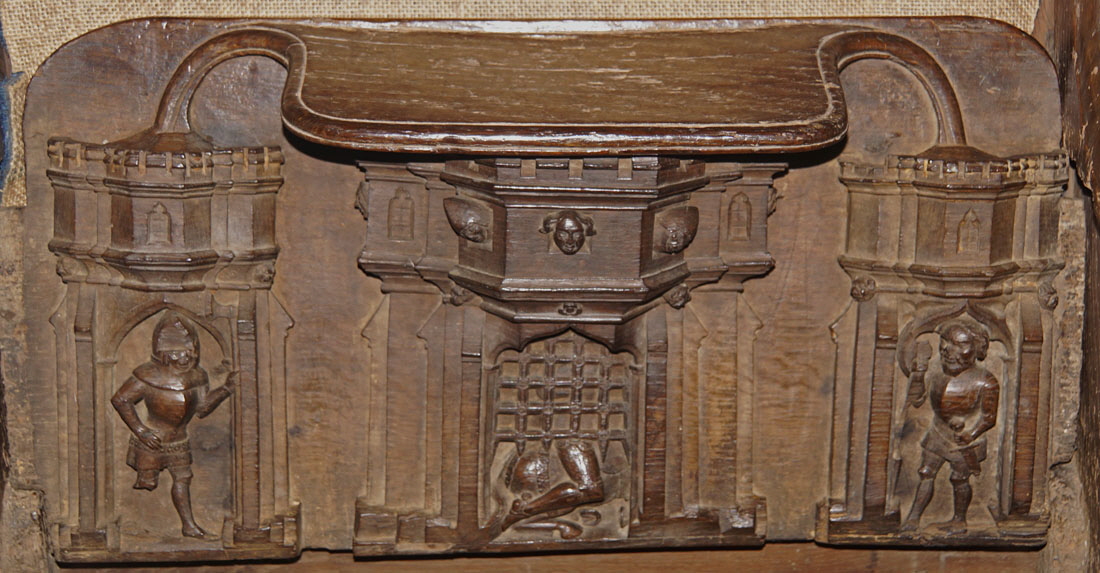 |
||
|
Sir Yvain is trying to enter Escludos’s castle via its portcullis but is trapped beneath its spikes. Behind his be-spurred leg is the split hoof of his unfortunate horse. Soldiers look out from the gatehouse above him. Other soldiers guard the subsidiary gates that form the unusually ornate “supporters” to either side. To the left and right of the upper gatehouse in profile are two heads that are likely to be those of women who according to the story saved Yvain from his enemies: Lunette who gave him an invisibility ring and Laudine, now the widow of Escudo who has died of his wounds. Yvain falls in love with her. She forgives him and marries him. Aaaah. Yvain was a member of Arthur’s Round Table, a son of King Urien and the sorceress Morgan le Fay. In Welsh legend Yvain is Owain. There is a huge amount written on the internet about this chivalric knight errant should you wish to know more! |
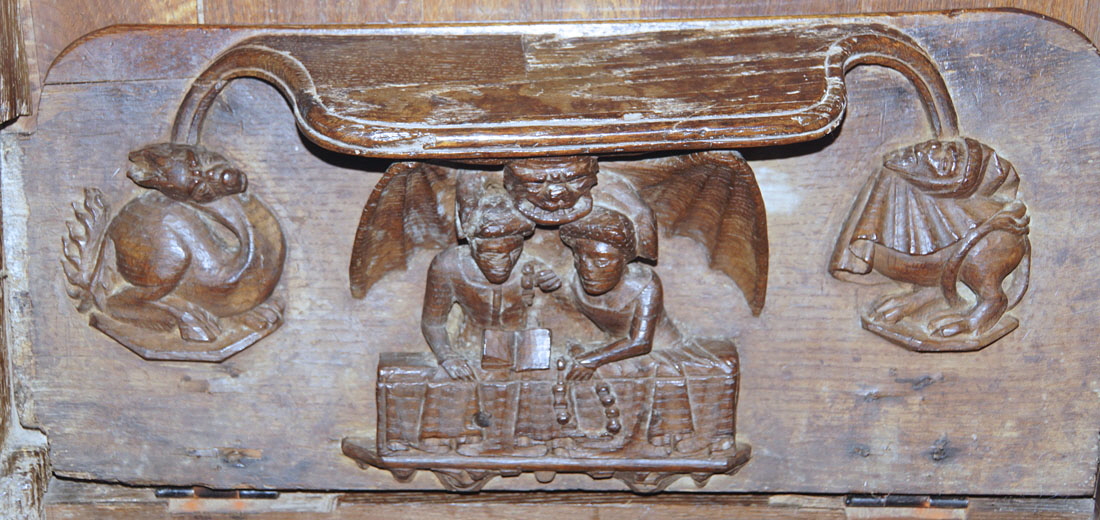 |
|
Tutivillus was a particularly cunning demon. He liked to listen to the chatter of people during the divine service and report it back to his master, Satan, to be recorded against their names. He was also charged with causing scribes to commit errors in their sacred manuscripts. Here he is looming over two parishioners, one holding a rosary, the other a missal, who are sinning by not paying attention to the mass. They will, in short, be toast! The supporters are two of the monsters who will be anxious to meet the two unfortunates in the afterlife. It isn’t clear what the gossips are leaning on. Maybe the parish chest? |
 |
|
This one’s a bit unsexy compared with the others. This is a group of Irish angels giving a concert up in heaven: harp on the left, mandolin in the centre and bodhran on the right. I think they called themselves “Wings” and I understand they are suing Paul McCartney for plagiarism. The Church Guide doesn’t agree with my interpretation, |
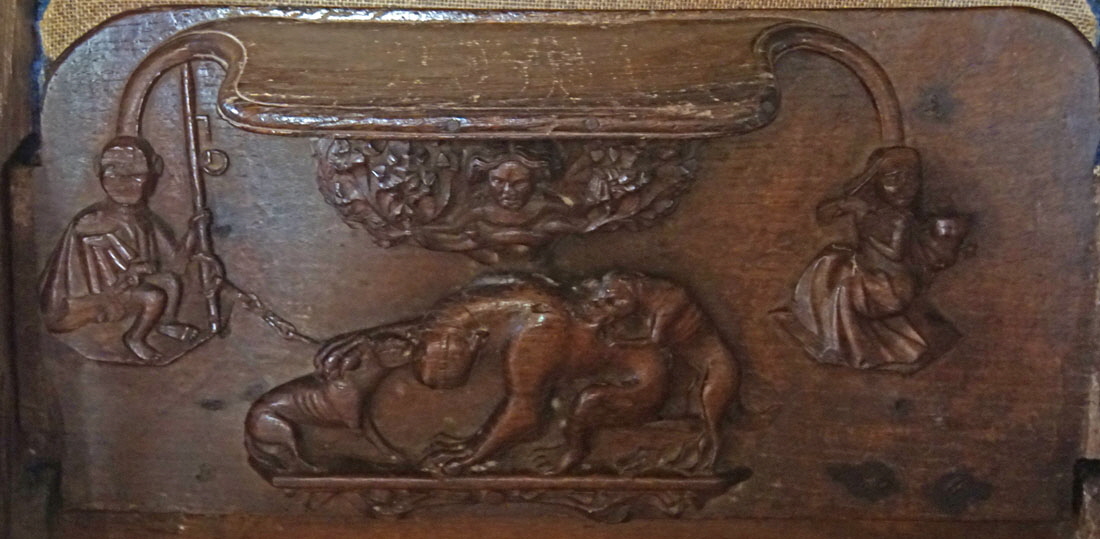 |
|
A scene that upsets our twenty-first sensibilities: a bear baiting scene. The rather under-sized bear is under attack from two mangy curs. He is putting up a fight, though, and his right fore-paw threaten to decapitate one of the dogs. To the left a man holds a pole to which the bear’s chain is attached. The Church Guide says he has a sabre by his side but I can’t see that, myself. To the right a woman in a shawl with a baby at her back watches the “entertainment”. Watching above is a man in a tree. I am fond of suggesting that mediaeval motives were probably not as different from our own as we like to imagine but scenes such as these do seem pretty barbarous. Yet the pretty town of Stamford in Lincolnshire where both Diana and I have lived only abolished the practice of “bull running” in 1839 - and in the face of popular opposition.. The bull would be pursued through the streets before being tipped into the River Welland from the town bridge. Do I hear the word “Pamplona”? 1868 saw the last public hanging in England. It was well attended. All over Europe barbarous rituals are still enacted in the name of “tradition”. I hardly need mention bullfighting. So perhaps we have not come quite as far as we would like to think, eh? |
|
|
||||||||||||||||||||||||||||||
|
Above Right: A priest also has his right hand raised in blessing while in his left he holds what the Church Guide describes as a “fan”. I’m a bit unconvinced by that. He has a cross on his front. At his feet is the head of a man, the style of which leaves us in no doubt as to its Norman origins. Pevsner suggests that the caring is an “Orans”: - one who is praying or pleading. The open handed, arms outstretched posture was used until the late twelfth century until the “hands together” posture supplanted it. Now, of course, its is popular again in evangelical congregations. Note that the man is barefoot which implies humility. There is something underneath his feet too but I can’t make out what it is. |
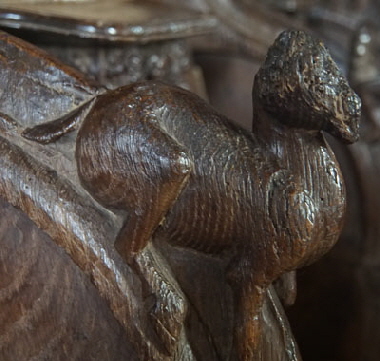 |
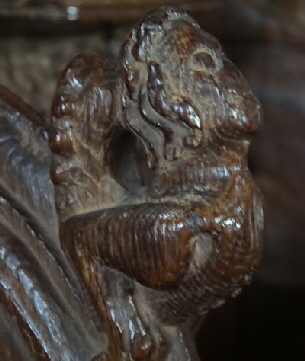 |
||||||||||||||||||
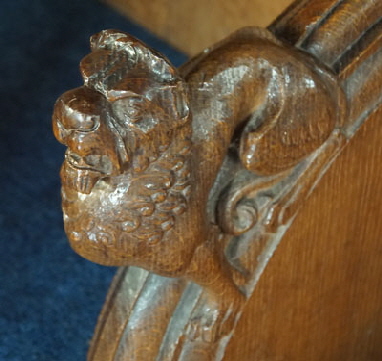 |
|||||||||||||||||||
|
Three more elbow carvings. |
|||||||||||||||||||
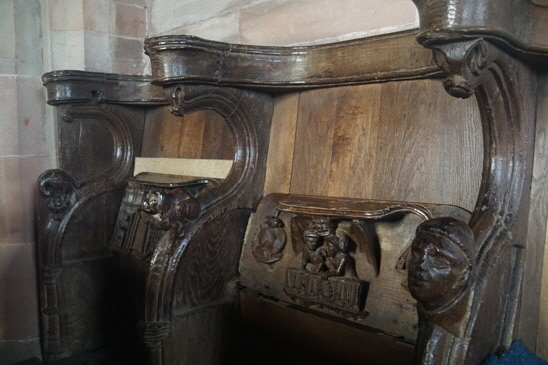 |
|||||||||||||||||||
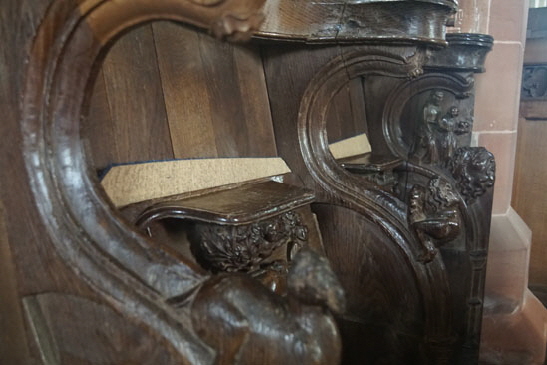 |
|||||||||||||||||||
|
Left: The misericord stalls are in pairs on the north and south sides. This is the southern group. Right: The northern group. |
|||||||||||||||||||
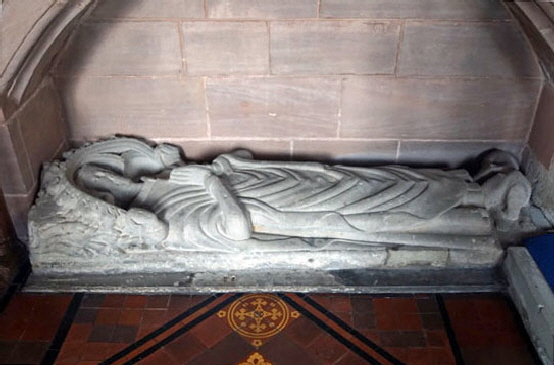 |
|||||||||||||||||||
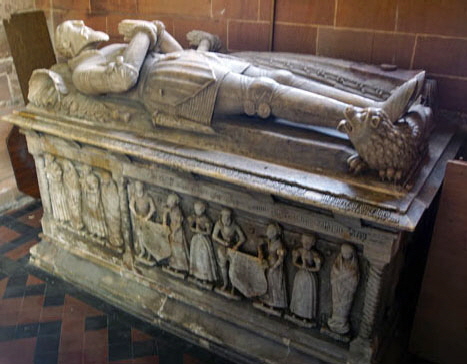 |
|||||||||||||||||||
|
Left: The alabaster chest tomb of Thomas Grey (d.1559) and his wife Anne (d.1586). The figures at the front are captioned alternately above and below the frieze. Right: A rare thirteenth century funerary effigy of a priest. The Church Guide reports it as being Roger de Bermingham who was “the builder of the chancel”. The builder of the chancel? Hmmm. I think not. That is unless you think a man called Wimpey built your house....Joking aside, though, this is a lovely survival. |
|||||||||||||||||||
 |
|||||||||||||||||||
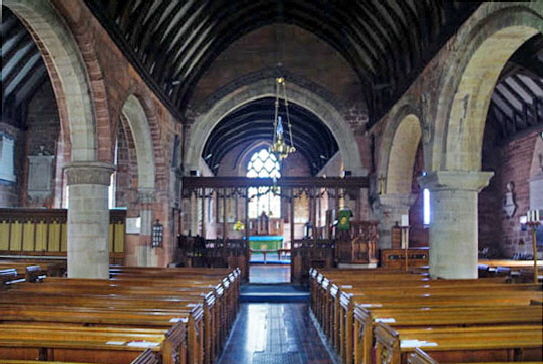 |
|||||||||||||||||||
|
Left: The interior looking east. The south aisle is Norman with hefty columns and square capitals. You can discern one of the spandrel carvings. The north aisle is a little later: the Church Guide says thirteenth century. Pevsner says very vaguely “nothing is left of the original detail”. What is clear, however, is that the arches are still semi-circular and certainly is the original design. The columns are slightly less hefty that those on the south and the capitals are round and with somewhat curious shallowly-carved simple decorative designs. Thirteenth century seems about right. but very early thirteenth century, I would guess and in a style that is not so much “Transitional” as a bit of a mason’s muddle! Right: The church from the south east. Note the Norman south aisle that is typically shallow but which less typically has a gabled roof that I suspect replaced an original lean-to roofline. |
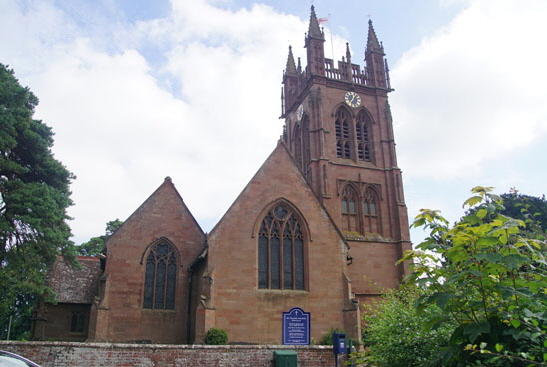 |
||||||||
|
The church from the west. The lower portions are Norman but the whole is a George Gilbert Scott “re-imagining”. The positioning of the tower is curious, although slightly less so within the context of the original floor plan which would have had no north aisle. |
||||||||
|
Footnote: Templar Graves Discovered |
||||||||
 |
||||||||
|
|
||||||||

